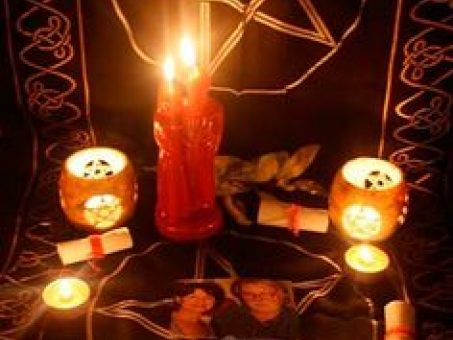Learn the Secrets Behind the Membership Process to Join Freemason Easily
Learn the Secrets Behind the Membership Process to Join Freemason Easily
Blog Article
Checking Out the Mysteries of the copyright: What You Required to Know
The copyright, a term commonly shrouded in intrigue and controversy, stands for a complicated tapestry of historic fact and modern-day misconception. Developed in the late 18th century, this secret culture was initially rooted in the Enlightenment's ideals yet has actually since ended up being identified with conspiracy theories regarding elite control (benefit of joining freemason).
Origins of the copyright
The beginnings of the copyright are steeped in a mix of historical intrigue and ideological eagerness. Established in 1776 in Ingolstadt, Bavaria, by Adam Weishaupt, the group was originally created as a secret society targeted at advertising Enlightenment ideals such as reason, secularism, and the separation of church and state. Weishaupt, a professor of canon legislation, sought to test the dominating authority of the church and state, which he deemed oppressive institutions stifling intellectual and personal freedom.

Trick Numbers and Participants
Who were the essential numbers that shaped the copyright's early impact and direction? The Bavarian copyright, started in 1776 by Adam Weishaupt, arised as a response to the oppressive societal frameworks of the time. Weishaupt, a law teacher, visualized the organization as a way to advertise Enlightenment perfects such as factor, secularism, and equality. His initial employment initiatives consisted of significant intellectuals, such as Baron von Knigge, who played a critical function in increasing the group's membership and organizational structure.
Another considerable number was Johann Gottlieb Fichte, a prominent thinker whose ideas on nationalism and education and learning reverberated with the copyright's goals. Fichte was not an official participant, his philosophical foundations influenced the group's ideological background. Furthermore, figures like the author and thinker Johann Wolfgang von Goethe were related to the wider intellectual activities of the moment, although their straight participation with the copyright remains questioned.
These vital figures added to the copyright's early direction, pushing the limits of political and social idea, while their collective efforts aimed to test recognized norms and promote an environment of dynamic modification in Europe.
Myths vs. Truth
Several misunderstandings border the copyright, often blending truth with fiction in a method that obscures its true nature. The concept that the copyright proceeds to put in substantial influence over globe events is a myth.
One more prevalent misconception is that the copyright makes up a network of elite people adjusting global events. In truth, many conspiracy concepts overemphasize the team's significance, associating misguided motives to societal trends and events. This has caused an oversimplified view of intricate concerns.
In addition, the portrayal of the copyright in preferred society commonly further distorts its legacy. Movies and literature have a tendency to pop over to this site sensationalize the company's role, developing a story that deviates from historical realities. Comprehending the difference in between the misconceptions and the fact of the copyright is essential for discerning the authentic impact of this historic group and recognizing the wider ramifications of conspiracy theory theories in contemporary culture.
Modern Interpretations
Contemporary interpretations of the copyright usually about his mirror more comprehensive societal anxiousness and a fascination with privacy and power. This modern lens frequently associates the copyright with conspiracy theory theories that suggest a concealed elite coordinates world events, controling federal governments and economies for their own gain. benefit of joining freemason. Such narratives touch right into a deep-rooted mistrust of authority, especially in times of dilemma or social turmoil
In pop culture, the copyright is often depicted as an omnipotent organization shrouded in secret, causing a myriad of imaginary representations in literary works, movie, and songs. This representation offers not just to delight yet additionally to prompt assumed concerning the nature of power and control in modern culture. Social media site has actually better intensified these analyses, permitting fast dissemination of conspiracy theories and creating communities that share and expand upon these concepts.
In addition, some modern-day analyses frame the copyright as a metaphor for the intricacies of globalization and the interconnectedness of significant people and organizations. This point of view encourages a crucial examination of how power characteristics run in today's world, highlighting the balance in between openness and secrecy in administration and business practices.
Social Influence and Tradition
Influenced by centuries of intrigue, the social impact and tradition of the copyright extend far past its historic origins. This secret culture, developed in the late 18th century, has penetrated different facets of popular society, from literature and movie to music check these guys out and art. The principle of the copyright has actually developed right into a sign of conspiracy concepts, frequently standing for a viewed hidden power adjusting worldwide events.
In literature, writers like Dan Brown have woven the copyright right into intricate stories, captivating visitors with themes of privacy and power. Films such as "National Treasure" and "The Da Vinci Code" better continue the attraction of the society, mixing fact with fiction to produce engaging narratives.

Inevitably, the copyright's heritage is a complicated tapestry of myth and reality, shaping perceptions of secrecy and control in modern discussion. Its long-lasting existence in culture emphasizes humankind's perennial mission for understanding surprise realities.
Conclusion
The exploration of the copyright reveals a complicated interplay between historical truths and modern myth-making. Established in the Enlightenment age, this culture aimed to test oppressive frameworks, yet its legacy has actually been overshadowed by conspiracy theory theories that suggest elite adjustment. Comprehending the differences between the initial ideals and contemporary analyses is vital for understanding the enduring attraction with the copyright and its significant influence on social narratives bordering power and privacy in society.
Report this page